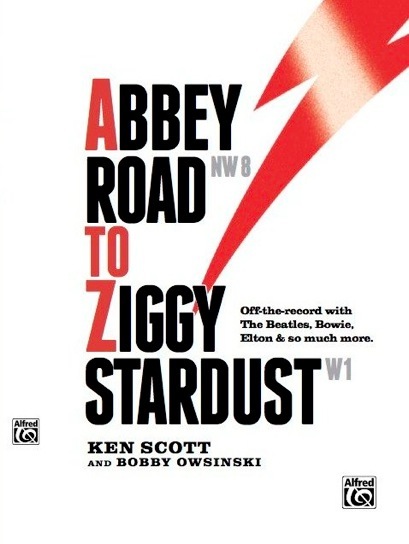“Abbey Road to Ziggy Stardust” Book Review
by Tim Wenger
Ken Scott, to put it frankly, is the man. He got his start as a (I’m sure, very nervous) teenager training to be an engineer at the prestigious EMI Studios in London, where his career started, and saw him engineering the Beatles, among other acts. His career took him from EMI to Trident Studios, to numerous studios across the world. Working with acts such as David Bowie, the Supertramps, and Elton John, in addition to the Beatles, he is perhaps most famous for, working on the White Album.
Scott lays it all down for us in his autobiography “Abbey Road to Ziggy Stardust.” The book documents his career step by step; in many cases, in about as specific of detail as it is humanly possible to remember, from logging tapes to producing world-renowned acts. The book is also written in a way that the musical novice can understand what he is talking about, and will even learn quite a few things along the way.
He breaks down, into great detail, a large number of the projects he has worked on, starting with how he was assigned the job, to the pre-planning of the record, all the way through the recording, mixing and post-production.
His tone throughout the book demonstrates an air of reflection: it is easy to see his progression from young novice to engineering and production master. The knowledge and confidence Scott has gained throughout his career become ceaselessly apparent as he discusses his work with Devo and other acts that came along deep into his career. At all times, however, he remains objective and as factually accurate as he can be, never letting his confidence turn into ego within his writing.
The reader gets the opportunity to become slightly familiar with the rock stars that Scott worked with. He talks about their personalities and how they affected the projects, from Bowie’s flamboyancy, to the inner conflicts of the Beatles. He even dispels the whole ‘Yoko ruined the Beatles’ rumor, explaining how she didn’t ruin them.
Also present in the book is how Scott’s personality played a role in the projects he worked on; from his inventing Kincade Instruments Low Level (KILL) Amplifiers for the Tubes’ liner notes, to his refusal to begin work on a project until the monitors were precisely the way he wanted them. He expresses multiple times why he declined to work with certain acts, even ones that he did end up working with, such as Kansas.
This book is a very interesting, albeit long, read, and is not to be missed not only for classic rock fans, but for anyone with an interest in recording and how it has evolved since the classic rock era. It is impossible not to learn a handful of new things about the way records are done, the way labels used to work, and just about everything else that has to do with the music business in the last forty years.
Category: Buzzworthy


















